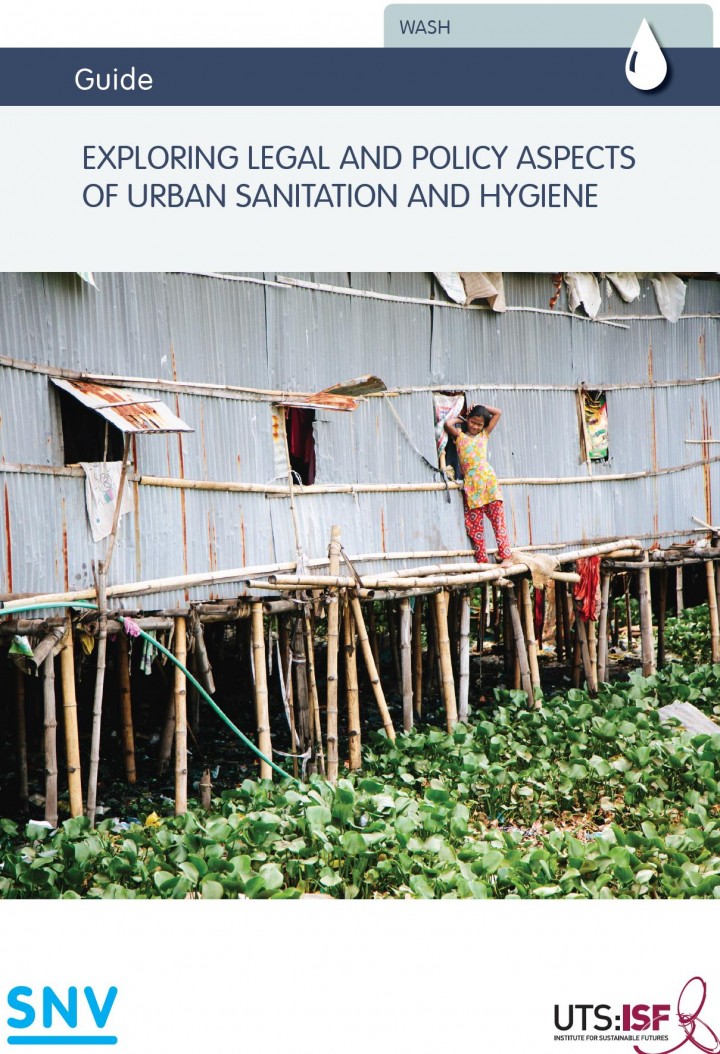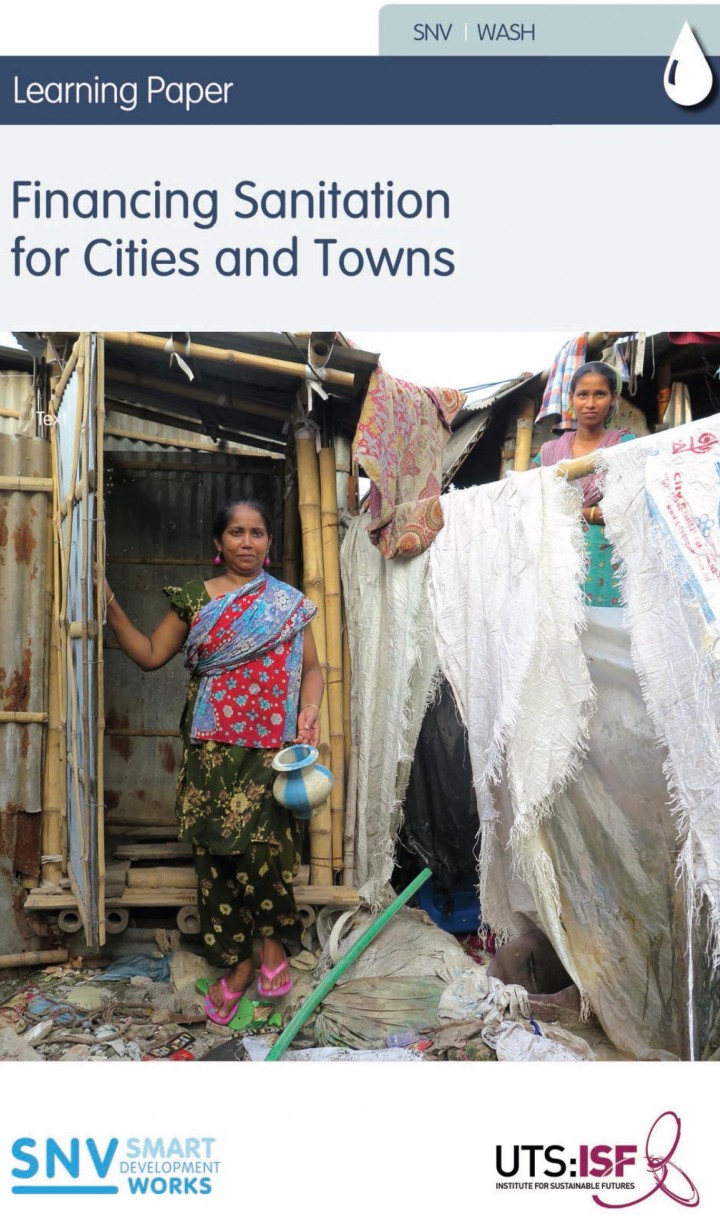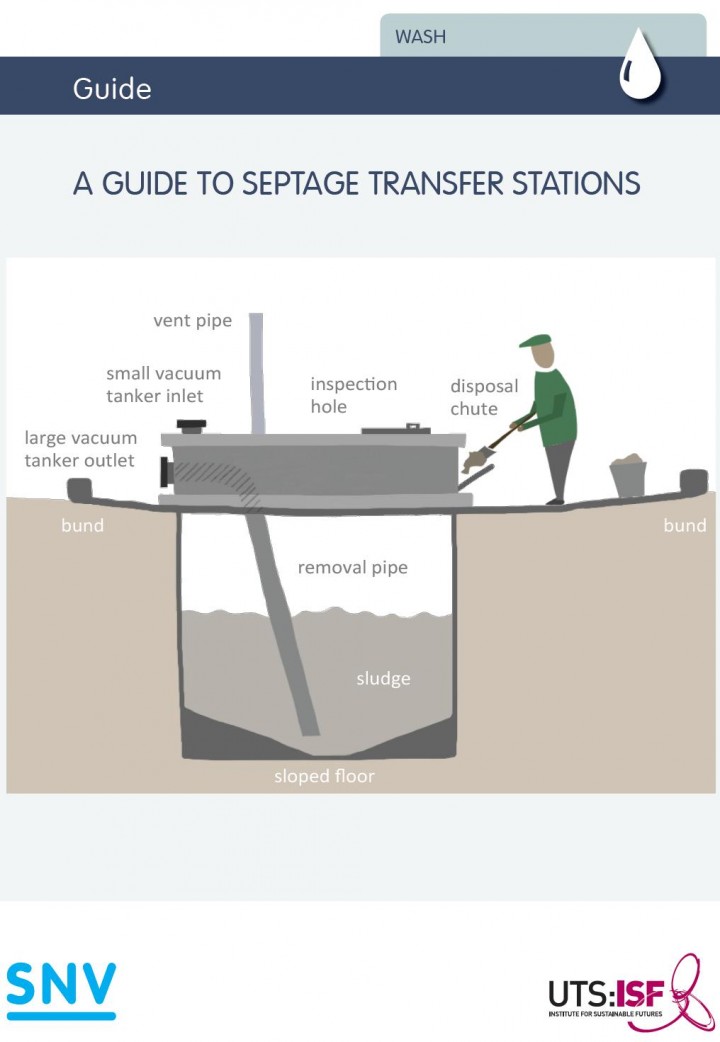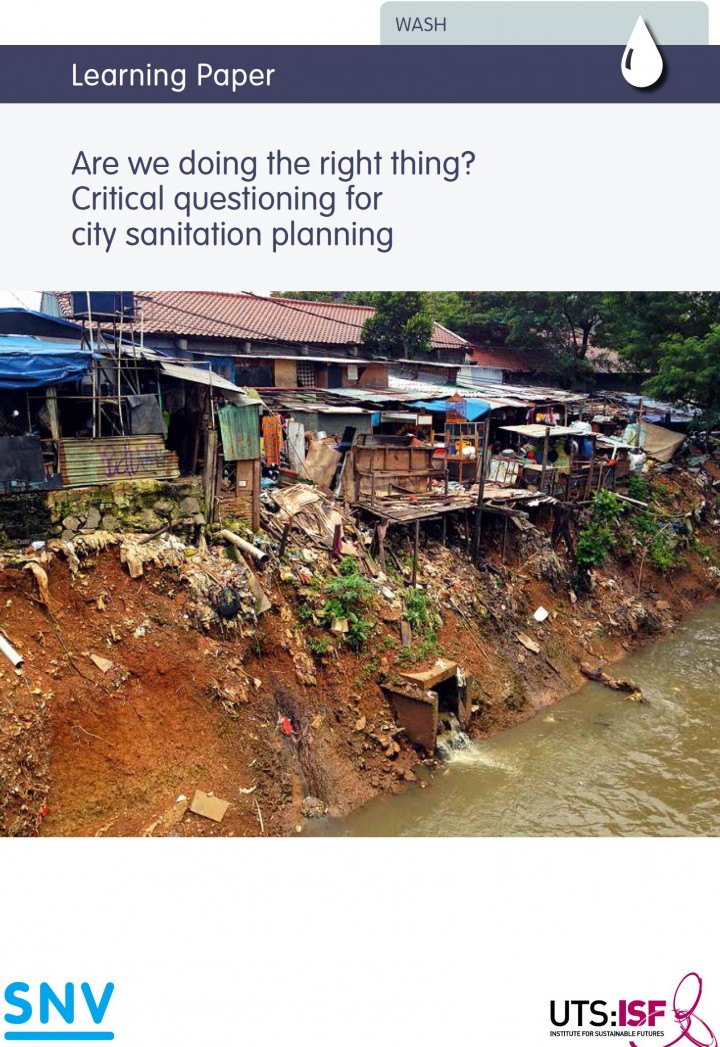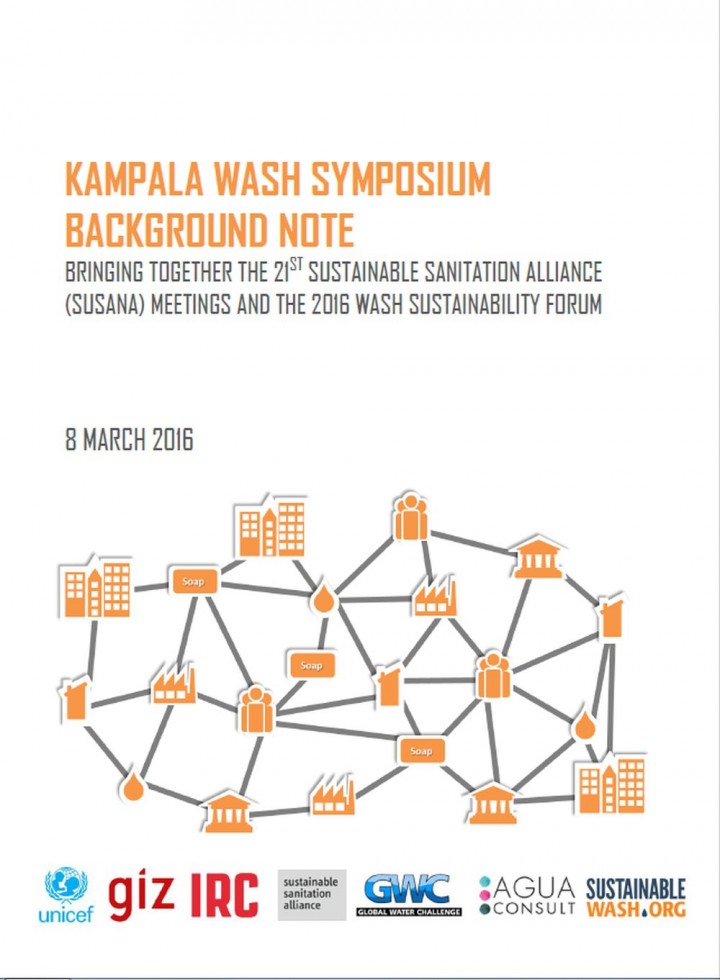Schaub-Jones, D. (2012) Sanitation as a business Trends shaping the market for urban sanitation – a discussion paper
In November 2011, Jefferson County, Alabama made world news by filing for the largest-ever American municipal bankruptcy. Bad housing loans? Pension liabilities too great? No, it was the huge cost of investing in new sewers that tipped them over the edge. Around the same time, a thousand miles to the North, the municipalities on Cape Cod, Massachusetts, were holding public meetings to discuss options for dealing […]
Nothomb, C. et al. (2016) Sanitation as a business Unclogging the blockages
The first Unclogging the Blockages conference took place in Kampala, Uganda from Feb 18-20 with the aim of putting on the table some of the major challenges facing the scale up of sustainable sanitation as well as in in collaborating towards innovative solutions. The conference gathered a diverse array of over 150 individuals both from within and outside the sanitation sector, including those working on […]
Bongartz, P., Vernon, N., Fox, J. (2016) Sustainable sanitation for all Experiences, challenges and innovations
Describing the landscape of sustainability of CLTS and sanitation with reference to the Sustainable Development Goals (SDGs) and through examples from Africa and Asia, the book captures a range of experiences and innovations from a broad range of institutions and actors within the WASH sector, and attempts to make recommendations and practical suggestions for policy and practice for practitioners, funders, policymakers and governments.
ISF-UTS, SNV (2016) Exploring legal and policy aspects of urban sanitation and hygiene
During 2012-2014, SNV did four country reviews of legal arrangements for urban sanitation and hygiene in Nepal, Bhutan, Bangladesh and Indonesia. Based on these experiences, this guide was developed to provide support and guidance for WASH practitioners undertaking a scan of legal arrangements to inform the design (use of frameworks and tools) and delivery (advocacy for improvements) of urban sanitation and hygiene programs.
ISF-UTS, SNV (2014) Financing sanitation for cities and towns
Planning and financing for sanitation in cities and towns in developing countries is often ad hoc and piecemeal. Stronger capacity to plan financing for sanitation infrastructure (and services) for the long term will lead to better outcomes. Planning for adequate long-term services requires consideration of the complete sanitation service chain over the lifecycle of the associated service infrastructure. This paper focuses on access to the […]
ISF-UTS, SNV (2016) A guide to septage transfer stations
Septage transfer stations have the potential to significantly reduce the amount of faecal sludge entering the environment by providing a local solution for septage disposal. Localised transfer stations shorten the time required for local operators to collect and transport septage, and they will be able to use smaller vacuum tanks that can navigate the densely populated residential areas. This guide provides information on the salient […]
ISF-UTS, SNV (2016) Are we doing the right thing? Critical questioning for city sanitation planning
Cities are clear examples of complex and rapidly changing systems, particularly in countries where urban population growth and economic development continue apace, and where the socio-political context strongly influences the directions taken. The concept of double-loop learning can be usefully applied to city sanitation planning. This paper prompts practitioners, policy-makers and development agencies to reflect on their approaches to city sanitation planning and the assumptions […]
Water for People (2016) Strengthening public sector enabling environments to support sanitation enterprises
Billions of people lack access to a decent toilet. Attempts to address this gap through direct-subsidy models have often been proven unsustainable as, given resource limitations, they are unable to provide desirable toilets that families are likely to use and maintain over time. Based on private sector success in low-income markets, business-based approaches may be able to help bridge this gap through sustainable market-based mechanisms […]
Furlong, C. (2015) SFD Report (vn 2015) - Kisumu City, Kenya SFD Promotion Initiative
Kisumu is the principal city of western Kenya and the third largest city in Kenya. It covers an approximate area of 297 km2 and sits on the shores of Lake Victoria. The city is divided into two topographical areas, the hilly north and the southern plain. The current population is estimated to be 419,072 and 60% of the population live in informal settlements. A […]
Myers, J., Pasteur, K., Cavill, S. (2016) The Addis agreement: using CLTS in peri-urban and urban areas CLTS knowledge hub learning paper
The CLTS Knowledge Hub at the Institute of Development Studies, with the help of Plan International Ethiopia, convened a three day workshop in Addis Ababa. The workshop titled ‘Using a CLTS approach in peri-urban and urban environments’ brought together people who had been involved in urban CLTS programmes to share their varied experiences and discuss what added value a CLTS approach can bring to the […]
MoES, SAEMEO INNOTECH, GIZ (2016) Scaling-up the Fit for School program Sisattanak district experience
“The question now is not whether school health programs are necessary... but how they can be implemented at meaning scale. This is the challenge that we now face,” (Bundy, 2011, p. xiv). This quote reflects a key issue in the field of school health and WASH in Schools (WinS), especially in countries where resources are limited compared to the challenges in this field. Often good […]
Veses, O., Dinku, H., Evans, B., Peal, A. (2016) SFD Report - Bure, Ethiopia SFD Promotion Initiative
Bure is located 400 km north of the capital Addis Ababa and 148 km south west of Bahir Dar and is within the Amhara State, Western Gojjam Administrative Zone of Ethiopia. It has a total urban population of 27,386 people. The number of Open Defecation is only 2%. Nevertheless, none of the city's excreta is delivered to a treatment plant. Therefore, only 33% of the […]
Veses, O., Dinku, H., Evans, B., Peal, A. (2016) SFD Report - Bishoftu, Ethiopia SFD Promotion Initiative
Bishoftu is located in the state of Oromia, Ethiopia, approximately 47 km south east of Addis Ababa. Its topography is undulating and characterized by flat land on the north and east parts of the city, locked by several lakes, while the south is dominated by hills (BCP, 2015). The geographical area of the city is about 15,273 ha, and it lies at an altitude in […]
Veses, O., Dinku, H., Evans, B., Peal, A. (2016) SFD Report - Axum, Ethiopia SFD Promotion Initiative
Axum is located in the Tigray region in the northern tip of the Ethiopian Plateau. The town is 1,041km away from the capital, Addis Ababa, with a population of 46,887. The number of Open Defecation is only 4%. Nevertheless, none of the city's excreta is delivered to a treatment plant. Therefore, only 22% of the city's excreta is safely managed, while 78% is unsafely […]
Lockwood, H. et al. (2016) Kampala WASH symposium background note Bringing together the 21st Sustainable Sanitation Alliance (SuSanA) meetings and the 2016 WASH sustainability forum
To this end the Kampala WASH Symposium, held in Uganda in June 2016, looked beyond the conventional notion of ‘projects’ to explore how we, as WASH actors, can and should work together within the wider complex systems that deliver services. With participants and presentations from governments, donors, researchers, and practitioners, this event brought emerging thinking on how to drive whole-system change and support the […]
Hassib, Y., Etemadi, H. (2016) SFD Report - Kabul, Afghanistan
Kabul is the capital and largest city of Afghanistan, located in the eastern section of the country. According to a 2012 estimate, the population of the city was around 3,289,000. It was selected for the SFD program because it is a mega city with only 20% supplied with piped water and 60% informal dwellings. In Kabul it was estimated that 25% of excreta is managed […]
Gutterer, B., Reuter, S. (2016) Key elements for a new urban agenda Integrated management of urban waters and sanitation
Sustainable Development Goal (SDG) 6 “Ensure access to water and sanitation for all” and its targets can only be achieved by establishing new models for managing water resources. The fact that the Millennium Development Goal target for sanitation was not met in many countries shows the need to overcome traditional patterns of […]
Furlong, C. et al. (2016) How to prepare an excreta flow diagram (SFD) SFD Promotion Initiative, 39th WEDC conference, Kumasi, Ghana - July 2016
This presentation was held at the 39th WEDC conference in Kumasi, Ghana in July 2016 by the SFD Promotion Initiative. The objective of the session was to introduce the tools available for SFD production and to guide participants through the process of creating an SFD. The presentation contains information on: - The SFD Promotion Initiative - What is an SFD? - Methodology for data collection - Terms and variables: a […]
Furlong, C. (2016) SFD Report - Dhaka, Bangladesh SFD Promotion Initiative
Dhaka, the capital of Bangladesh, is one of world's most populated cities. ‘Dhaka City’ is defined in this report as the areas under the jurisdiction of the two Dhaka City Corporations. They cover an approximate area of 120 sq. km and house a population of 6.8 million people. The number of open defecators is low (less than 1%), but a majority of the city’s […]
Furlong, C. (2016) SFD Report - Lima, Peru SFD Promotion Initiative
Lima the capital of Peru and the third largest city in Latin America covering an area of 2,700 km2. Metropolitan Lima consists of the Province of Lima and the Constitutional Province of Callao and is located in a coastal desert. Approximately one third of Peru’s population live in Metropolitan Lima. It has an estimated population of 9,904,727. 92% of the excreta from the population of […]



